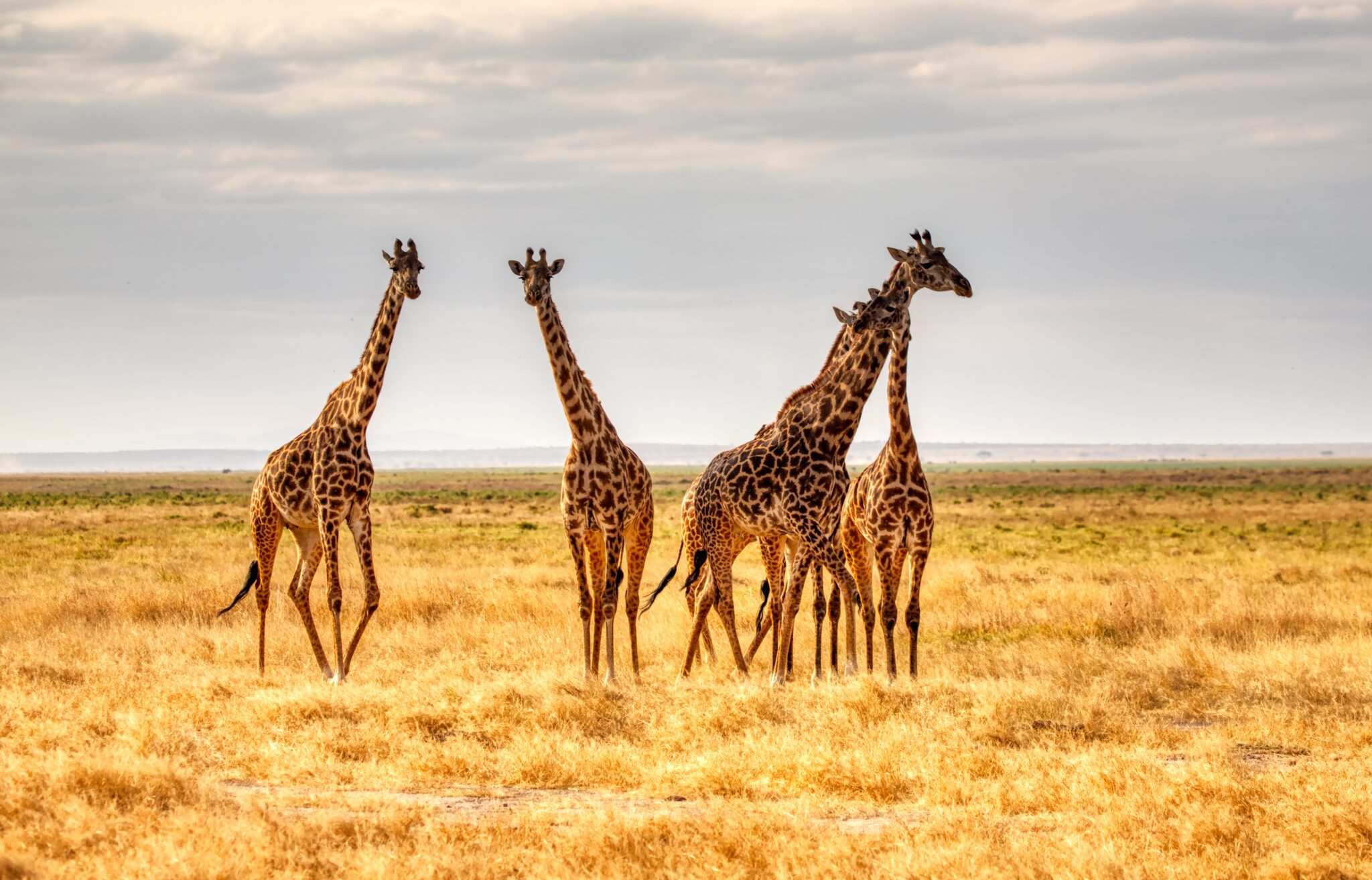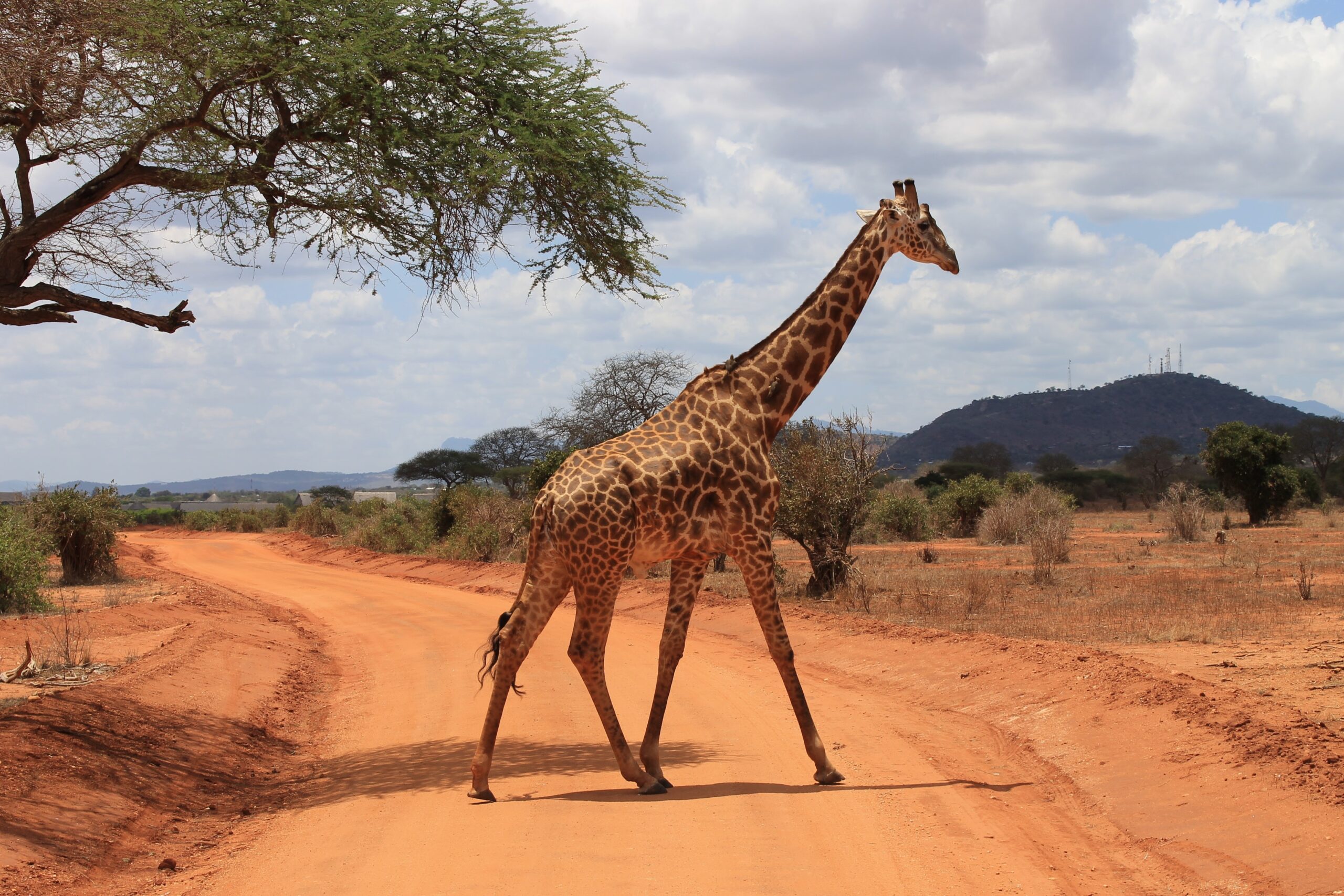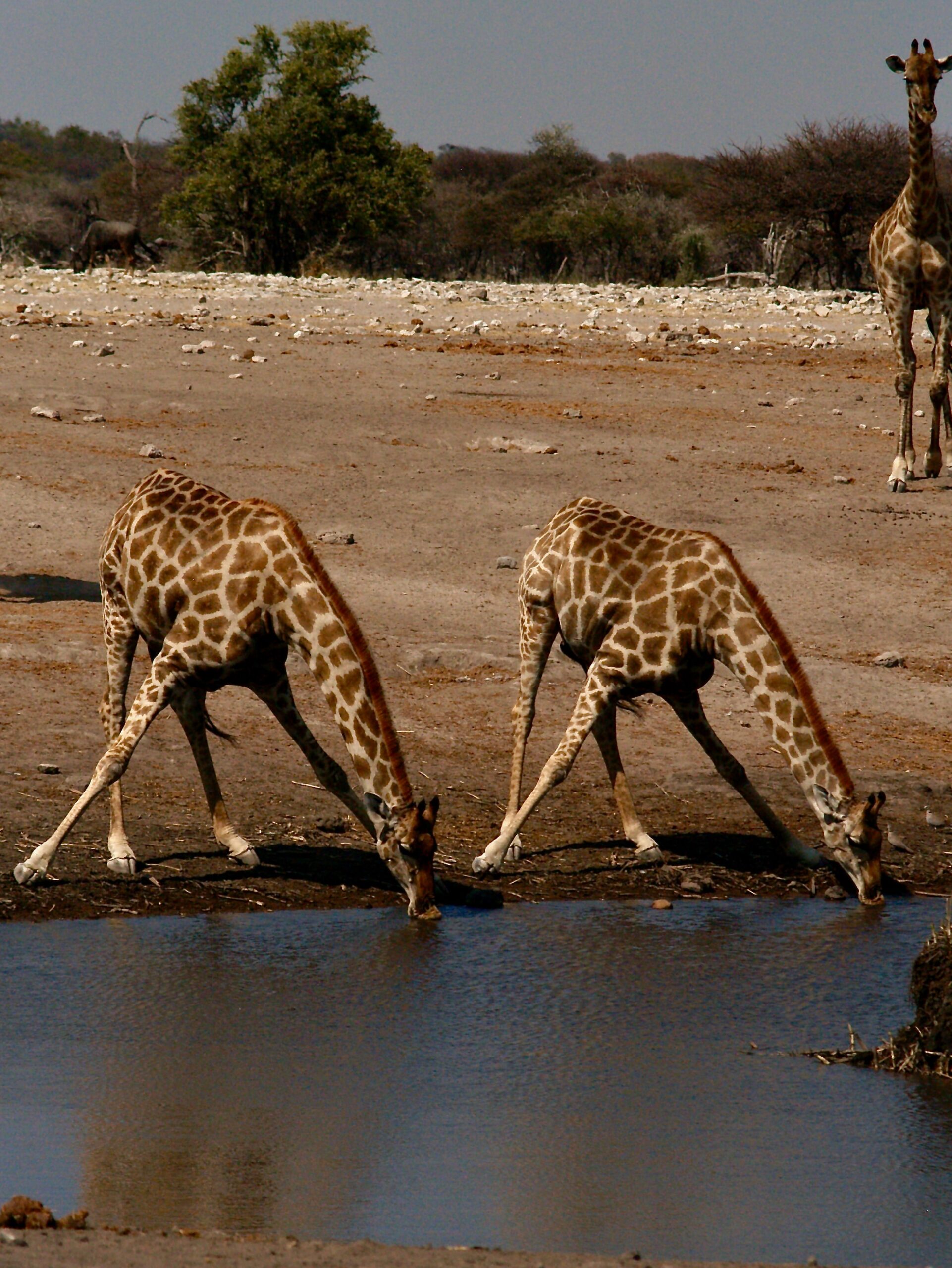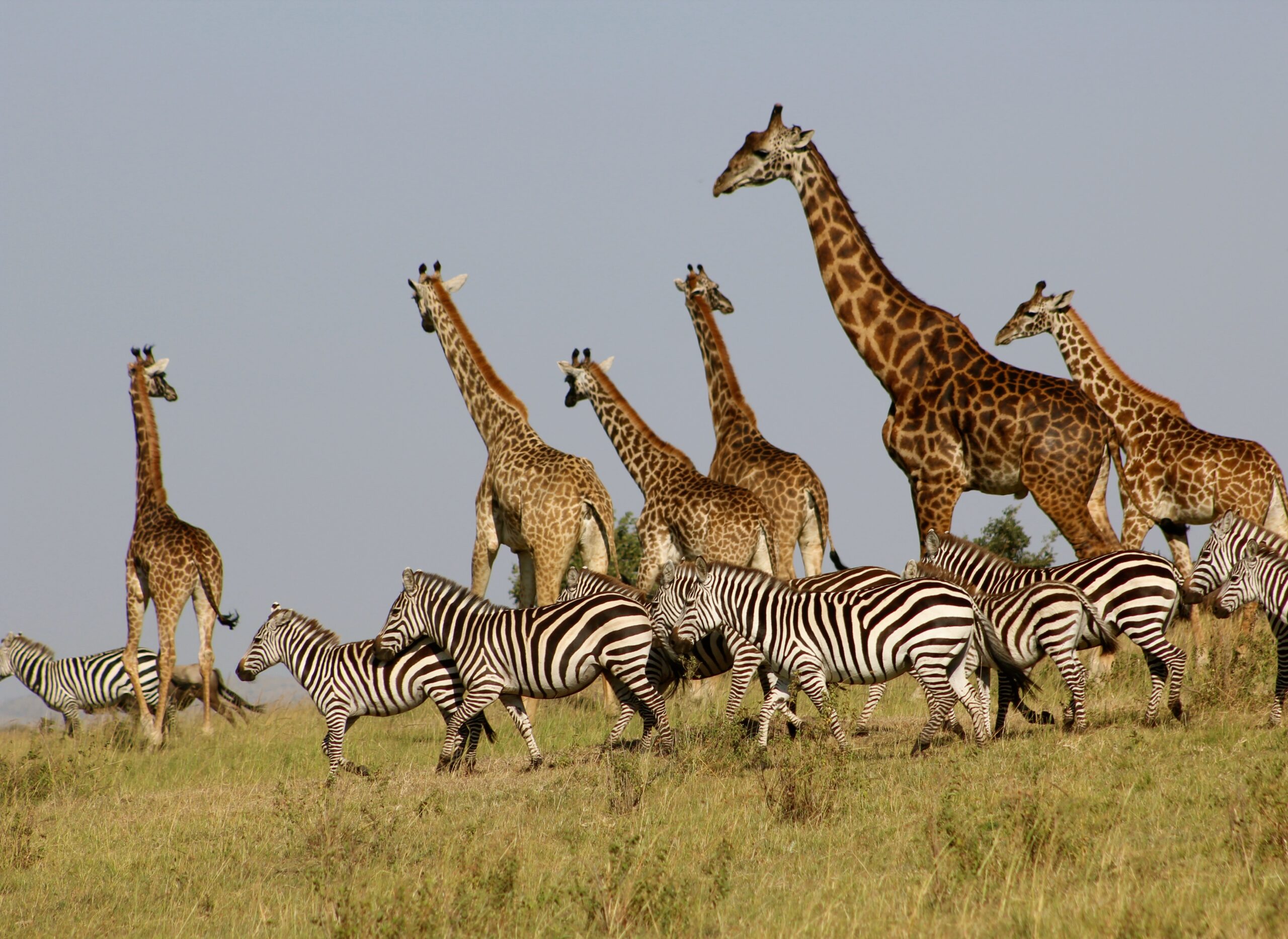Q&A Blog | World Giraffe Day
Jenna Stacy-Dawes
Check out this World Giraffe Day Q&A blog with Jenna Stacy-Dawes as she describes into her experiences as a Senior Research Coordinator in Population Sustainability at the San Diego Zoo! Here she speaks about her time as a field researcher in Northern Kenya aiming to connect communities and wildlife.
Q&A Blog
Published June 21, 2023
HoN Thumbnail and Title Background Image: https://science.sandiegozoo.org/staff/jenna-stacy-dawes-ma
How did your involvement in the San Diego Zoo’s Zoo Corps program at a young age influence your decision to pursue a career in conservation?
I joined the Zoo Corps program when I was just 12 years old. As part of the program, we got to interact with guests and share a bit about the conservation work the Zoo does. I realized I loved being able to educate people about wildlife and conservation. We also go to tour the Beckman Center (which is the building I work in now!) and got to hear from researchers about all the amazing conservation work the Zoo is involved in. I was so inspired and from there I knew that was where I wanted to work! I wanted to be part of the team really making a difference for these animals.
Could you tell us about the socio-ecological methods you employ to understand and mitigate human-wildlife conflict?
Our giraffe research team, the Twiga Walinzi, conduct population surveys, monitor giraffe movements and their habitats, and assess the impacts of large-scale infrastructure on giraffe populations. In coordination with Giraffe Conservation Foundation and WildMe we are helping to develop GiraffeSpotter, a database that utilizes coat-recognition technology to track individual giraffe.
In addition, the Twiga Walinzi situates local conservationists as wildlife rangers and field ecologists, ensuring the presence of a trained, on-the-ground team dedicated to monitoring local wildlife and habitats. Through social science and community engagement, we are also working to better understand communities’ perceptions of giraffe, assess levels of poaching in the region, and implement community strategies to increase involvement in protection of these beautiful animals. For the first time, we can depict giraffe movement corridors and the space reticulated giraffe need to survive. These insights are critical to protecting reticulated giraffe habitats, informing conservation decisions, and addressing the drivers of poaching.

What are some of the key challenges you face in studying giraffe and leopard populations in Northern Kenya, and how do you overcome them?
One of the biggest challenges over the past few years has actually been the increasing impact of climate change. Over the past few years, Northern Kenya has experienced very intense and prolonged drought periods which greatly impact the people, livestock, and wildlife that live in the region. These drought periods cause more overlap of people and wildlife and thus leads to more human-wildlife conflict. Being able to work directly with the communities to adjust to the leading threats and issues in the region has been a massive benefit of these community-based conservation initiatives.
Could you share an example of a successful community engagement initiative that effectively connected local communities to wildlife in Northern Kenya?
Absolutely! I think our giraffe research team in Kenya, The Twiga Walinzi, is a wonderful example of a successful community initiative. The team is made up of 18 men and women that are all from the communities in which they work. These incredible women and men are leaders in conservation and have a strong, direct impact on their communities and how they perceive giraffe. They are directly responsible and in charge of all the research on the ground, including photo monitoring surveys, monitoring individual animals, engaging with communities, and even assisting with giraffe orphan rescues when possible and needed.

In your opinion, what are the most effective strategies for minimizing human-wildlife conflict and promoting coexistence between communities and wildlife?
I truly believe that community-based conservation efforts are a pivotal part of an effective conservation initiative, especially in areas like northern Kenya where there is such high overlap between wildlife, people, and livestock. To help illustrate this, we estimate that over 95% of reticulated giraffe habitat (the species of giraffe that is endemic to this region) occurs outside of formally protected areas like national reserves or conservancies. Thus, most of their range is directly overlapping with people. So, in order to truly protect giraffe in this region it is critical to be able to work directly with the people living alongside of them in order to save them.
Can you share a memorable experience you’ve had while working in the field in Northern Kenya that highlights the importance of your research and conservation efforts?
Oh gosh there are so many! I think my favorite memory may have to be a trip I was on in August of 2018. We were driving through Namunyak Conservancy which is where some of our twiga Walinzi team is based. As we were driving through the conservancy a tower of over 60 giraffe were running across the road just ahead of us. To see so many giraffe at one time was absolutely incredible and something I will never forget. Namunyak Conservancy is a community conservancy that had faced very high levels of wildlife poaching not too long over so to see such a thriving tower of giraffe is a true testament to the conservation initiatives of Namunyak Conservancy and their dedication to conservation.


What advice would you give to young individuals who are passionate about wildlife conservation and want to make a positive impact in their communities?
Get involved wherever you can! I started off as a volunteer at the Zoo after I finished my master’s degree. I was working full-time in another field but knew I still wanted to work for the Zoo one day so I applied for this volunteer opportunity and after a few months was lucky enough that they needed extra help on the project and hired me on. So many of these programs too are in desperate need of help so always love any support we can get from volunteers.
Another great way to actively contribute to conservation projects is through Zooniverse which is a citizen science initiative that supports dozens of research projects across different disciplines and from locations across the world. As part of our work, we host the Wildwatch Kenya site in which anyone from anywhere in the world can log on and help us classify images from out trail cameras in Kenya. We get millions of images a year so volunteers on this site are a huge help for us and these efforts directly contribute to our conservation projects!
